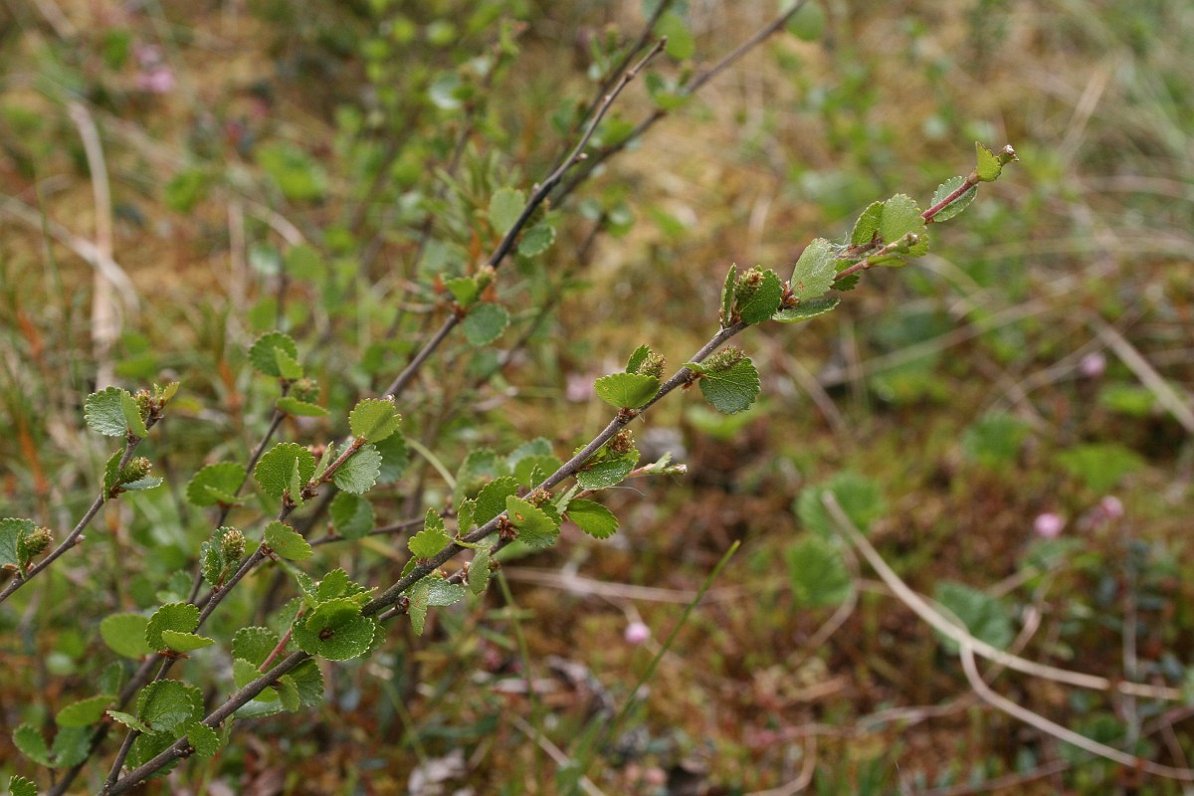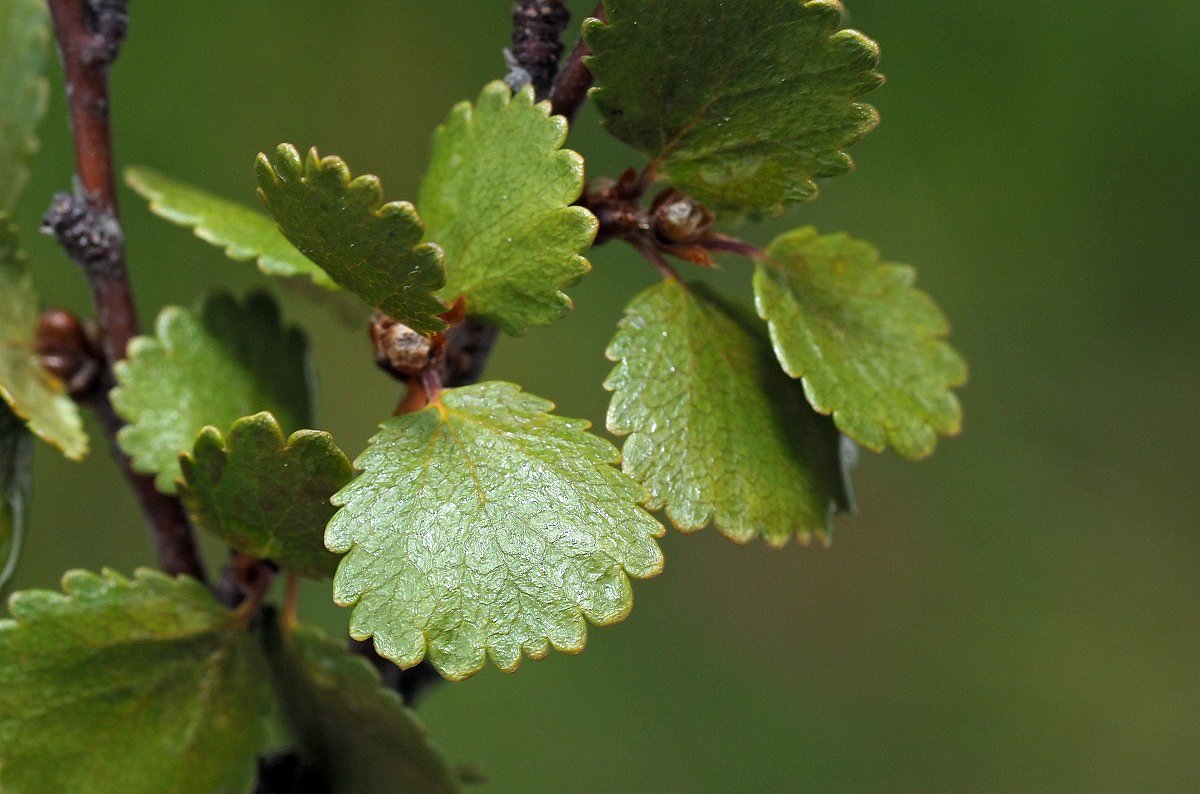Dwarf birch is usually short, up to 1.20 meters high, so it is classified as a dwarf shrub or small shrub, explained Linda Strode, researcher at the Faculty of Biology of the University of Latvia and leading specialist of the Dendroflora Department of the National Botanical Garden.
“Dwarf birch is a very, very interesting object, fascinating, mysterious and therefore also interesting – you can’t immediately understand how it grows,” she admitted.
What makes this shrub mysterious is the fact that part of the trunk and branches are under the ground, more precisely – under a layer of sphagnum and peat. The trunk, branches, and roots are underground. In the deepest places, they have already started to rot.
“When you enter the swamp, from 20 centimeters to a meter, even less, you see a dwarf birch, these branches with small leaves. Then, when you start digging to collect, you already highlight this layer of sphagnum, digging into the peat, it is possible to collect them up to three meters long under the ground,” said Madara Metāle, a master’s student at the Faculty of Biology of the University of Latvia.
Dwarf birch “Betula Nana”
Photo: Hans Dekker/Freenatureimages
–
–
Dwarf birch in Latvia is found in swamps and marshy forests in Vidzeme and Latgale, some deposits were also found in Kurzeme. To the west, the farthest deposit found is in Cenas tireli.
“Then it already grows further up on the tundra. For example, dwarf birch in Estonia is very different from Latvian dwarf birch, it is very common.
If in Latvia this is a rare, protected species, then in Estonia it is available on almost every corner,” said Metāle.
In those places where dwarf birch grows, sphagnum will always grow, different species of sphagnum will be found. In the company of the dwarf birch, other small shrubs usually grow as well, for example, andromeda, andromeda, blueberry, and rarely also heather.
“Most of these plants are what we call clonal growth – it’s very difficult to tell where the root neck is, where the branches are, where one plant starts and the other ends. They’re intertwined. One plant produces a lot of side shoots , meandering on, occupying the vacant spaces,” explained Strode.
The researcher discovered that it is similar with dwarf birch. Even if it looks like several dwarf birch trees are growing in the same field, it may be one individual.
“For example, one site has been studied, where a dwarf birch about five, six meters wide and 40 meters long is found along the edge of a lake and a marshy forest. It turned out that genetically it is one individual. One birch 40 meters long. This means that for centuries has spread like this growing up,” revealed Strode.

Photo: Dirk Hilbers/Freenature images
–
–
Fear of extinction
The researchers assessed that despite the status of a protected plant, there is concern that the dwarf birch will soon disappear from Latvia. Only a few point deposits remain in Lithuania.
“The biggest threats to the survival of the dwarf birch in Latvia have been peat extraction, digging of swamps and reclamation of swampy, wet forests.
As a result of peat extraction, where peat was obtained by milling methods, these deposits were physically destroyed. It’s mostly 1950s,” explained Strode.
On the other hand, as a result of the draining of swamps and forests, practically all other forest plants start to grow better, the woody plant layer, the tree layer and also the small shrub layer, and dwarf birch is not competitive in shady conditions – it needs light.
Currently, summing up the deposits and the size of the deposits, a third of the dwarf birch population is located in specially protected areas, but a large part of the deposits are very small in terms of size, for example, 20×20 meters in area.
Dwarf birch can be called a witness of ancient times in Latvian nature, because it has been growing here since the Ice Age. “Dwarf birch has been in Latvia since the ice age. Then the entire territory of Latvia was covered in ice, the climate was colder, and it was adapted to grow here. As the climate became warmer, dwarf birch slowly retreated, other species came in,” said Metāle.
–
Highlight the text and press Ctrl+Enterto send the text fragment to be corrected to the editor!
Highlight the text and press on Report a bug buttons to send the text fragment to be corrected to the editor!
–
–


